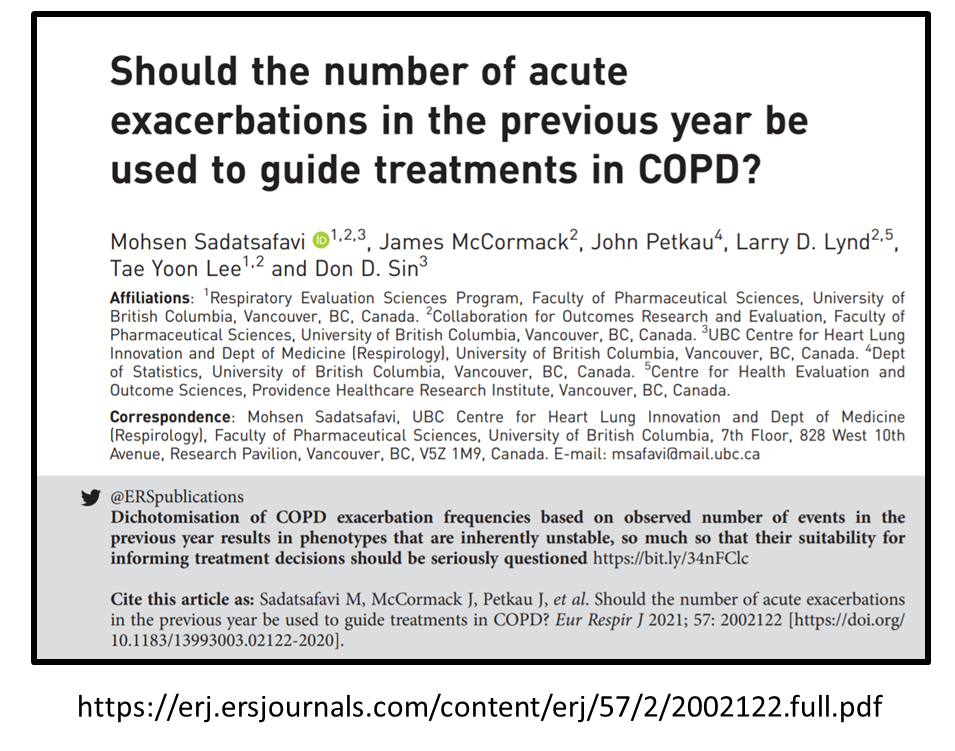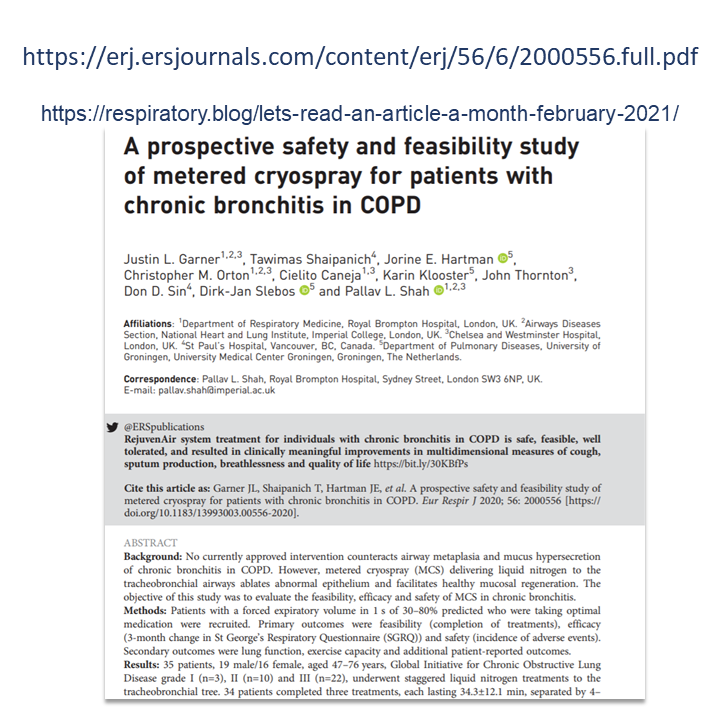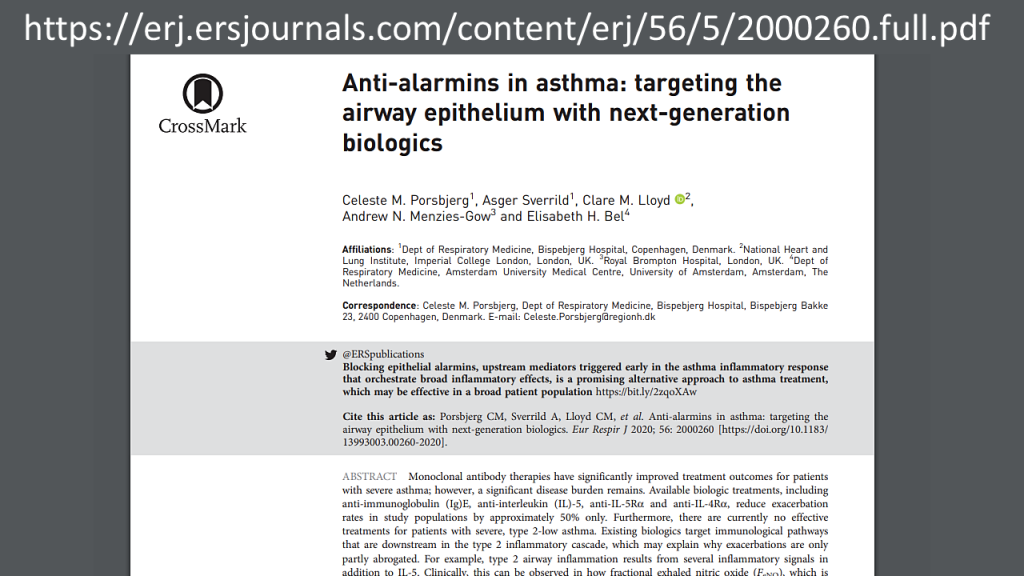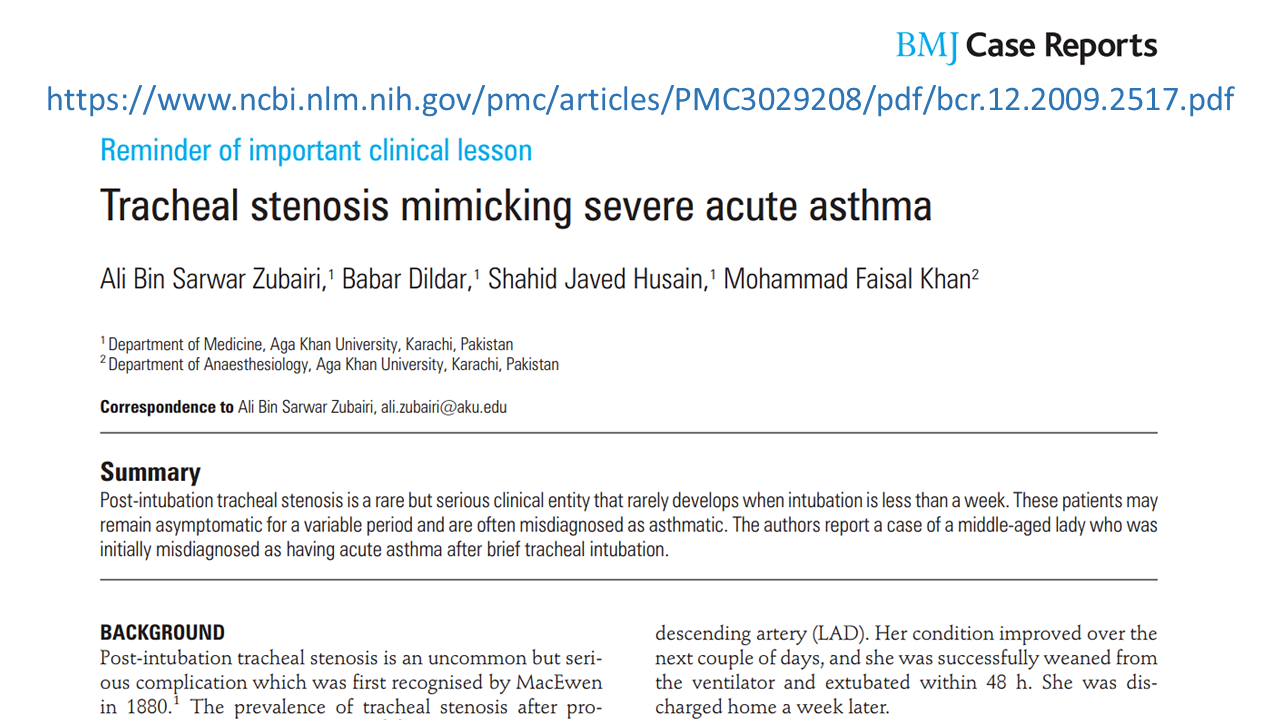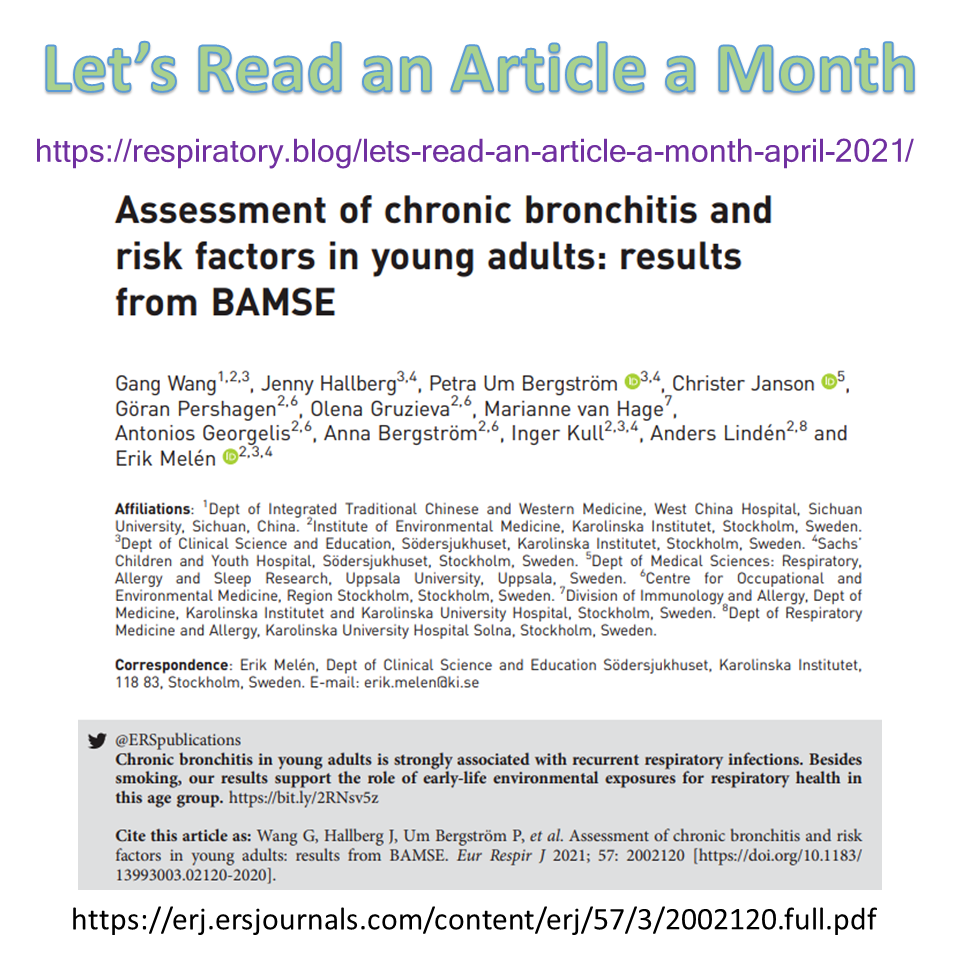
Every month I try to read an open-access article. After reading the article, I share the title and associated link with my followers. This is to encourage clinicians to read articles, stay up to date, and continue to grow.
This month I found a great piece to share with you. This one is about chronic bronchitis. The objective of this paper is to “assess the prevalence of chronic bronchitis in young adults in a Swedish population-based birth cohort and to identify early-life risk factors, including environmental exposures, for disease development” (p2).
Assessment of chronic bronchitis and risk factors in young adults: results from BAMSE
By: Gang Wang, Jenny Hallberg, Petra Um Bergström, Christer Janson, Göran Pershagen, Olena Gruzieva, Marianne van Hage, Antonios Georgelis, Anna Bergström, Inger Kull, Anders Lindén, and Erik Melén.
European Respiratory Journal (ERJ) 2021 57: 2002120 ; DOI: 10.1183/13993003.02120-2020
Link to the ERJ page: https://erj.ersjournals.com/content/57/3/2002120?etoc
Link to the pdf page: https://erj.ersjournals.com/content/erj/57/3/2002120.full.pdf
3 Reasons why I found this article interesting
- Authors comment on the impact of cigarette and e-cigarettes and chronic bronchitis in young adults (direct and indirect). Also, authors included factors such as breastfeeding as a protective factor which is something I would not have immediately thought of.
- It includes a 24-year follow up assessment. They have excluded asthmatic patients to make their observation more accurate. Various assessment tools were included, including self-assessments, pre and post spirometry, and FeNO2.
- This study reminded me that this condition “may exist with our without airway obstruction” p7.
What’s your experience with chronic bronchitis in young adults? Have you noticed a pattern?
Happy learning and reading!
Farzad Refahi
April 16, 2021
https://respiratory.blog/lets-read-an-article-a-month-April-2021/
